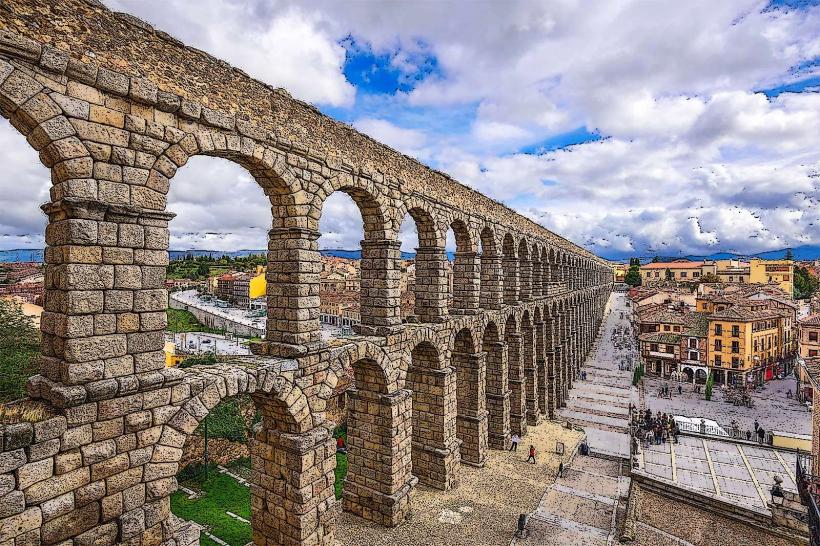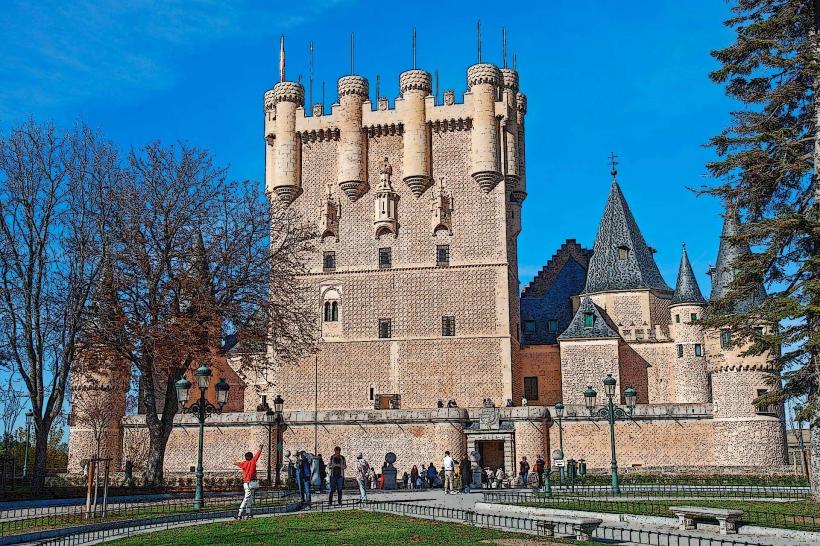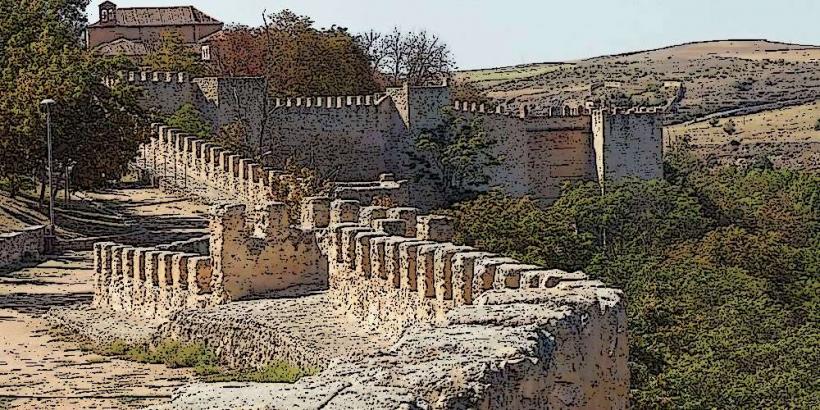Information
Landmark: Segovia CathedralCity: Segovia
Country: Spain
Continent: Europe
The Segovia Cathedral, also known as the Cathedral of Our Lady of Segovia (Catedral de Nuestra Señora de la Asunción y de San Frutos), is one of the most prominent landmarks in Segovia and a prime example of Spanish Gothic architecture. Located in the heart of Segovia's Plaza Mayor, the cathedral is both a religious and historical monument that stands as a testament to the city’s rich cultural heritage.
Overview and History
The Segovia Cathedral was built in the 16th century, following the Gothic style, but with a slightly more Renaissance touch in some parts. Its construction began in 1525, replacing an earlier church that had been destroyed during the Revolt of the Comuneros in 1520. The cathedral was completed in 1577, during the reign of King Philip II.
Despite its relatively modern construction, the cathedral was designed to reflect the Gothic style that dominated Europe during the Middle Ages. Over time, it has become one of the last great Gothic structures to be built in Spain.
Architectural Features
The Segovia Cathedral is notable for its stunning Gothic design, though it blends Renaissance and Baroque elements in its decoration and design. Some of the most impressive features include:
1. Exterior
- Facade: The main entrance features a beautifully sculpted Gothic facade, with intricate carvings of biblical scenes and religious symbols. The cathedral’s facade is marked by three large portals, each adorned with detailed sculptures of saints, angels, and other religious figures.
- Tower: The cathedral is crowned by a tall and slender bell tower, which rises to a height of 88 meters (289 feet), making it one of the tallest cathedral towers in Spain. The tower is topped with a spire that gives the cathedral its distinctive silhouette against Segovia’s skyline.
- Flying Buttresses: As with many Gothic structures, the Segovia Cathedral features flying buttresses, which help support the weight of the roof and allow for the inclusion of large stained-glass windows.
2. Interior
- Nave: Inside, the cathedral features a spacious nave with high vaulted ceilings and pointed arches typical of Gothic architecture. The interior is divided into three naves by rows of columns supporting the roof.
- Altarpiece: The cathedral’s altarpiece is a striking example of Renaissance art, showcasing detailed scenes from the life of Christ. The artwork, made of gold leaf and wood, is a central feature of the sanctuary.
- Chapels: The Segovia Cathedral contains a variety of chapels, many of which are richly adorned with artwork, sculptures, and religious icons. The chapels are dedicated to various saints and figures from Christian history.
- Stained Glass: The cathedral is known for its impressive stained-glass windows, which date from the 16th century. The windows depict scenes from the Bible and various religious themes, letting in colorful light and adding to the sacred atmosphere of the interior.
3. Sacristy and Treasury
- The sacristy is a beautifully decorated room where the liturgical items are kept. It contains religious relics, ornate vestments, and gold and silver vessels used in the celebration of mass.
- The treasury houses several valuable liturgical objects, including chalices, crosiers, and other sacred items.
4. Organ
- The cathedral houses a grand organ in the choir area, a masterpiece of Baroque craftsmanship. It is still used today for religious services and special concerts, enhancing the cathedral’s acoustics.
Significance in Segovia’s History
The Segovia Cathedral has played a central role in the spiritual life of the city for centuries. Over its long history, it has been the site of many religious ceremonies, coronations, and special events. The cathedral's location in Plaza Mayor means it has always been at the heart of Segovia’s civic and religious life.
- Cathedral of Royalty: During the Middle Ages and Renaissance, the cathedral was closely tied to the Spanish monarchy, and several kings and queens were crowned here.
- Witness to History: The cathedral was completed shortly after the Revolt of the Comuneros (1520), a significant moment in Spanish history. The destruction of the earlier church led to the construction of a new, more grandiose building.
- Cultural Symbol: Over the years, the Segovia Cathedral has become a symbol of Segovia itself, representing the city’s deep-rooted history, wealth, and spiritual significance.
Visiting the Segovia Cathedral
Visitors to the Segovia Cathedral can explore the impressive architecture, artworks, and sacred spaces. The cathedral is an essential stop for those exploring Segovia, and its central location in the Plaza Mayor makes it easy to find. Here are some key details for visitors:
- Hours: The Segovia Cathedral is open to visitors throughout the year. It is typically open daily, with hours of operation that may vary by season. It is also open for religious services, so visitors should check for mass schedules.
- Admission: There is an entrance fee to visit the cathedral. This fee helps maintain the building and supports its ongoing use for religious purposes. Some discounts may apply for students, seniors, or group tours.
- Guided Tours: Guided tours are available and provide an in-depth look at the history and significance of the cathedral. These tours are available in multiple languages and offer a comprehensive experience.
- Accessibility: The Segovia Cathedral is located in the Plaza Mayor, making it easy to access on foot from other major landmarks in the city. The entrance is accessible, but some areas of the cathedral may be less accessible due to its Gothic design.
Fun Facts
- "La Dama de Segovia": The Segovia Cathedral is often referred to as "La Dama de Segovia" (The Lady of Segovia) because of its elegant design and towering presence. It is often compared to other Gothic cathedrals like the Notre-Dame Cathedral in Paris, though it is smaller in size.
- The Final Gothic Cathedral: Segovia Cathedral is one of the last Gothic cathedrals to be built in Spain, completed after the Gothic style had largely fallen out of favor elsewhere in Europe.
- Visible from Every Part of Segovia: The Segovia Cathedral is so tall that it is visible from almost every part of the city, offering a majestic presence that can be seen from the surrounding streets and hillsides.
- A Place of Peace: The Segovia Cathedral remains a place of worship and reflection, with its solemn atmosphere offering a peaceful retreat from the bustling city.
Conclusion
The Segovia Cathedral is one of the jewels of Spain’s architectural and religious heritage. Its Gothic design, impressive altarpieces, and historical significance make it an essential part of Segovia’s identity. For history buffs, architecture enthusiasts, and those seeking a spiritual experience, the Segovia Cathedral offers a memorable and enriching visit.




